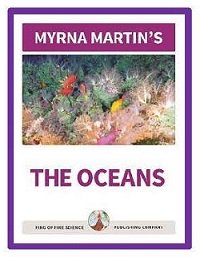Australia's Great Barrier Reefs
One of the great wonders of the natural world
The reefs were declared a World Heritage Site in 1981
The Great
Barrier Reefs off the coast of Australia are one of the seven great wonders of
the natural world. The reefs were declared a World Heritage Site in 1981. The
Australian government created a Marine Park in June 1975 that included the reefs.
The park includes all of the Barrier Reefs and the World Heritage Area
which is even larger. The park was designed by the government to protect the
area for people living today and for future generations.

Crown of Thorns starfish (seastar)
Barrier reefs along queensland coast
2,900 reefs and 900 islands
The Great Barrier Reefs
stretch along the Queensland coast that make up the World Heritage Site. There
are more than 2,900 individual reefs and 900 islands in the area included in
the Great Barrier Reefs Park. The reefs are only about 7% of the protected areas along the
Queensland coast. The entire park area is over 3000 kilometers (1800 miles)
long. The coral reefs are located between 15 kilometers (9.3 miles) and 150
kilometers (93 miles) off the Queensland’s coast. Each coral reef is about 65
kilometers (40 miles) wide.
Hard and soft corals
Reefs are coral skeletons
The 2,900
individual coral reefs that make up the Great Barrier Reef are the skeletons of
coral. Coral polyps are tiny invertebrate animals about the size of a pencil
eraser. There are hard and soft corals that live in the oceans but it is the
hard corals that create reefs. They extract calcite (calcium carbonate) from
ocean water to create the hard structures that make up their exoskeletons.
These hard structures protect them from predators.

This Oceans books is designed for students who want to learn about the oceans for a class. It contains 16 chapters, quizzes and activities about the ocean. Chapters include Tide Pools, Coral Reefs, and Mollusks. Myrna Martin

Click for More Information and to Order
Coral polyps and zooxanthellae
Zooxanthellae are algae
The body
of coral polyps are clear or colorless. They get their beautiful colors from
algae that live inside their body called zooxanthellae (zoo-an-thel-lee). The colors vary in coral reefs depending on the zooxanthellae
that live with the coral polyps in a symbiotic relationship.
How The original corals started a coral reef
Reefs increase in size as corals build new homes
The original corals that created each reef
are attached to the rocks on the seafloor. Each succeeding generation builds
their homes on top of the previous generation’s exoskeleton made of calcite
extracted from seawater. Over the centuries the reefs increase in size. The
Great Barrier Reef is so large that it is the only living structure that can be
seen from outer space by the astronauts.
Sanctuary and home for plants and animals
600 species of corals in the reefs
The coral reefs provide a sanctuary and home for a large variety of plants and animals. There are over 600 different species of hard and soft corals that make up the reefs. Jellyfish, mollusks sharks, whales and dolphins are just some of the animals that live all or at least part of the time around the coral reefs.
crown of thorns starfish
Destroying coral reefs
The Crown of Thorns starfish have been destroying many coral
reefs as they eat the tiny polyps that make up some of the reefs. Scientists
studying the problem have found this is the only place on Earth where Crown of
Thorns starfish live. Today, many scientists believe that the starfish are nature’s
way of opening up new areas along the coast line for new coral reefs to
develop.
KIDS FUN Science Bookstore
Check out Myrna Martin's award winning textbooks, e-books, videos and rock sets. The Kids Fun Science Bookstore covers a wide range of earth science topics. Click here to browse.










